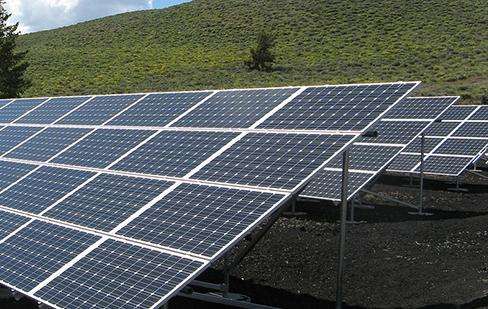The reason for the efficiency of electricity generation at low temperature difference: the small temperature difference of sea water.
Compared to biochemical energy and nuclear energy, the main reason why ocean temperature difference energy cannot be applied commercially on a large scale is the low thermal efficiency of the cycle. The most effective way to improve the thermal efficiency of the OTEC system cycle is to increase the temperature difference between cold and warm seawater. The temperature difference between warm sea water and cold sea water must be at least 20 °C to achieve electricity production by ocean temperature difference.
Based on an average sea surface temperature of 25°C, cold sea water of around 5°C is typically sampled at a depth of around one kilometer in the ocean. If the temperature differenceture continues to widen, the depth will be deeper.
Change: When the temperature in the metal is unequal, free electrons at high temperatures have greater kinetic energy than free electrons at low temperatures. Like a gas, thermal diffusion occurs when the temperature is uneven. Therefore, free electrons diffuse from the high temperature end to the low temperature end and accumulate at the low temperature end, thereby forming an electric field in the conductor and causing an electric potential difference. at both ends of the metal rod. This diffusion of free electrons continues until the effect of the electric field strength on the electrons is balanced by the thermal diffusion of the electrons.
Detailed Information
In 1856, Thomson used the thermodynamic principles he created to conduct a comprehensive analysis of the effectSeebeck and the Peltier effect, and a connection is established between the Seebeck coefficient and the Peltier coefficient, originally unrelated to each other. Thomson believed that at absolute zero there is a simple multiple relationship between the Peltier coefficient and the Seebeck coefficient.
Based on this, he theoretically predicted a new thermoelectric effect, that is, when current passes through a conductor with uneven temperature, in addition to producing irreversible Joule heat, the conductor also absorbs or releases a certain amount. of heat (called Thomson heat).
Or conversely, when the temperatures at the two ends of a metal rod are different, a potential difference will form between the two ends of the metal rod. This phenomenon was later called the Thomson effect, becoming the third thermoelectric effect after the Seebeck effect and the Peltier effect.
Baidu Encyclopedia - Production of thermoelectric power
Baidu Encyclopedia - Ocean Thermoelectric Power Generation
The simulation of Hunan in 2012 is shown in the figure, in a uniform magnetic field Two parallel metal guide rails, sufficiently long and having negligible resistance, are separated by the plane of the guide rails and the water
(1) When the guide rails intersect the magnetic induction line to the left, I=
| BLv< /tr> |
| R+r |
The guide rail is subjected to an amperometric force F1=BIL towards the right
Metal rodThe guide rail is subjected to an upward ampere force F2=BIL
The guide rail is subjected to a horizontal friction force to the right f=μ (mg- BIL)
According to Newton's second and sorted F-μ?mg -(1-μ) BIL=ma
We can see that whene I=0, that is to say when the guide rail has just been pulled, the guide rail has the maximum acceleration: am=0.4 m/s2
(2 ) As the speed of the guide rail increases, the induced current increases and the acceleration decreases. When a=0, there is a maximum speed,
That is to say F-μmg-(1-μ)BImL=0,
There is a maximum current Im═
| F?μmg |
| (1?μ)BL |
| (1)?4m/s 2 ?(3) |
| (1) The initial speed of the metal rod when it begins to slide is null According to Newton's second law: ①? (2) Suppose that when the movement of the metal rod reaches stability, the speed is, and the force exerted on the rod along the guide rail is balanced ③ According to Ohm's law: ④ ⑤ < p>Substituting ③④⑤ into the data, we get: ?< p>( 3) When the sliding speed of the metal rod reaches a stable level, what is the electrical power of the device?Mechanical power of the device The efficiency of the conversion of mechanical energy into electrical energy Insert Data Solution: ?
|














